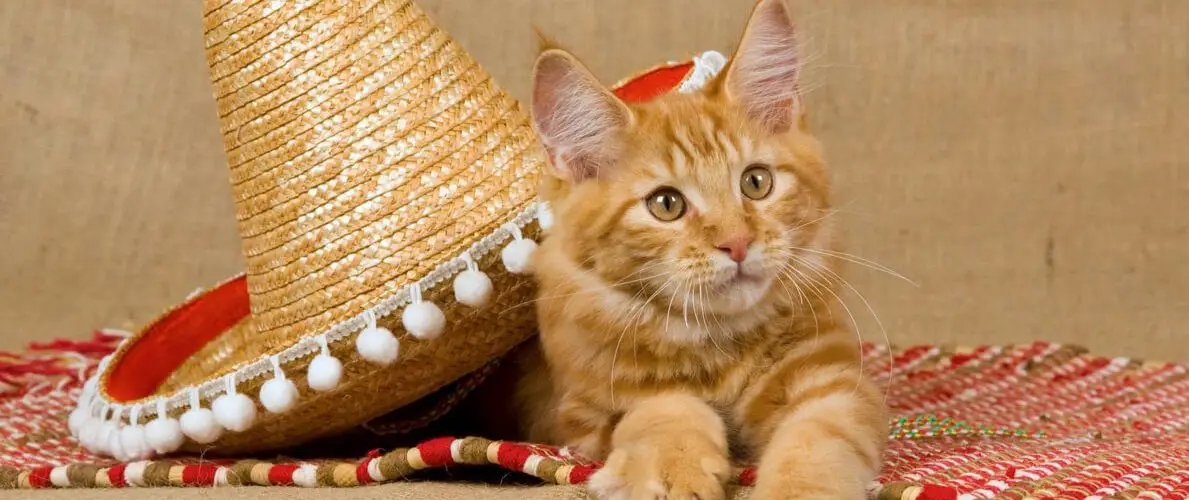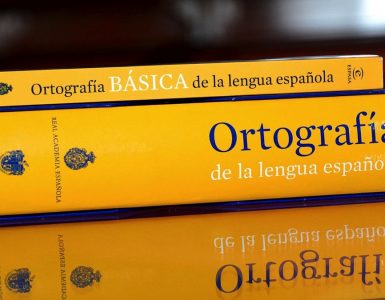After dogs, cats are one of the most loved domestic animals by man. They are independent, cunning and very tender, so it comes as no surprise that there are many different ways to say cat in Spanish. There are not as many ways of saying cat as dog in Spanish, but here is a list of some of these ways.
Gato – Cat
The origin of the word gato derives from some Latin terms that we will explain below. In Ancient Rome, the term cattus was used to name domestic cats. Although this is a theory, since this term has very diverse etymological roots that refer to cautus, as prudent or cunning; catus as skillful or ingenious and even catum for catch, because it is an animal that catches rodents.
Be that as it may, this term, besides referring to the animal, can also be used as an adjective to describe a thief, a cunning person, and even in countries like Argentina, it can be an insult to someone who goes into debt to pay prostitutes. Although it all depends on the context, the tone of voice and the facial expression with which it is said, in these countries it is still mostly used to refer to the feline animal.
Gatito/Gatico – Kitty/Kitten
It is the diminutive of gato and refers to baby kittens. We can also use it for bigger cats that we are very fond of. It is the most polite way to refer to a domestic cat in front of its owner to make them feel good. Unlike the previous way, their use as an adjective is completely different. To say gatito or gatico to a person means that you find them cute or cuddly, or that they can be small and cunning at the same time.
Gatuno – Catlike
Although gatuno really means “belonging to the cat” or “having to do with the cat”, we can also refer to feline pets as gatuno or amigo gatuno (catlike friend). This term is widely used in veterinary settings, both to refer to specific medications and to classify accessories exclusively for cats.
Felino – Feline
Like gatuno, the term feline means “that it is related to the cat” or “that has characteristics of the cat”. That is why it is normal to find it as an adjective and even as a simile in some printed media and literary texts. However, we can also refer directly to the animal using felino or amigo felino (feline friend).
Minino – Puss
Minino is one of the Latin diminutives that has been used to refer to cats and remains valid today, both in Latin American countries and in Spain. It comes from min, which is an onomatopoeic term used to call these domestic pets. Minino is also the most popular proper name for cats in Spanish, especially if the cat is a stray and frequents our house a lot. It is like the term fulano cat version.
Misino – Missino
Misino, like minino is another of the Latin diminutives given to cats in Ancient Rome. It derives from musio, which in turn means mouse and refers to cats as being the quintessential mouse hunter of the time. It was also adopted as an affectionate way of referring to them because they became a much loved and respected animal by the Romans, as they were the most efficient form of pest control that existed at the time and kept rats away without too much effort.
Miau-miau – Meow-Meow
It is an onomatopoeic form of the rooster’s meow, which we can use to get their attention so that they come to us. It is also the way in which children learn to identify this animal for the first time, so it is common to hear this term in kindergartens, schools and any place where preschool children live. It is the Spanish version of meow-meow and can also be used just miau to refer to a specific cat.
Mishi/Michi – Indigenous onomatopoeia
This way of saying cat in Spanish has gained strength thanks to social networks. In Latin America, there have been lots of memes where many of the protagonists are cats. The term michi comes from Quechua, because when the Spanish brought them to the region, the indigenous people called them mishi-mishi, making the term michi or mishi one of the most widespread names in all Latin American countries.
Morrongo/Morroño – Purring word “morr morr”
Both are onomatopoeic terms imitating the cat’s murmur. While cats in Latin America purr “morr morr morr morr”, for English speakers it is synonymous with “purr purr purr purr purr”. From the imitation of this purr comes morrongo and morroño, used to call cats in countries like Mexico, Chile and Peru. It is also used to call servants or housekeepers, so it is common to refer to them in these two ways.
Micifuz/Misifús – Cat character from a popular poem
The term misifús comes from Germanic meaning “cat’s paw”, it is also used to refer to prostitutes or to women who dress up a lot, are arrogant or enjoy nightlife, as it also means “to go furtively” (like a cat’s paw). The term Micifuz, which differs from misifús, was popularized to mean cat in Spanish thanks to an epic and burlesque poem, written by Lope de Vega, where the protagonist, a cat named Micifuz, falls in love with the cat Zapaquilda.
Silvestre – Starring Sylvester & Tweety Pie
Stray cats, specifically black cats with white spots, are called Silvestre after the animated series Silvestre y Piolin (Sylvester & Tweety Pie). Sylvester is one of the most beloved cats on television, so it is also common to call other domestic cats this way, regardless of whether or not they have the same physical characteristics as this animated character.
Mizu – Miz (Onomatopoeia)
This term originates from the onomatopoeia miz, which is used to call a cat in a subtle way. When felines feel attacked or in danger, we can imitate soft sounds to lure them over to where we are. That is why they are attracted by pronouncing “mizu, mizu, mizu” and as a result of this habit, we can also refer to them as Mizu.
Garfield – Animated character
Like Silvestre, cats with striped yellow fur, just like the cartoon character, are called Garfield. Its popularity was achieved thanks to the comic strips in newspapers and magazines of the last century and the term began to be used in Spanish slang to refer to any type of cat, especially when it is stray, gluttonous and lazy.
Tom – From Tom & Jerry
It is another of the most common names for cats in Spanish slang thanks to the Hanna-Barbera series Tom and Jerry. It is also used to name stray cats that do not belong to a specific owner, but pass by different houses furtively to drink water and eat whatever is offered to them.
Final thoughts
It is interesting how some series and fictional characters have influenced the way we refer to cats in Spanish today. I also hope that these different ways of saying cat in Spanish have been useful and interesting for you and that you now know a few more ways to call our furry feline friends, both in Latin America and Spain.










Add comment